
Stretching from the expanse of space to sagas right here on Earth
2020 was quite the year for science fiction, but it wasn’t all about escaping to other worlds. It’s easy to imagine flights of fancy in a spaceship to be a reprieve to reality, but science fiction and fantasy literature is the product of people with real concerns about the real world, and accordingly, they write about the challenges that we see in the world around us. Over the last 12 months, I’ve been thinking about the value of speculative literature in a time like this. There’s a meme going around that reading is a collective hallucination that we get by staring at bits of a dead tree. That’s certainly accurate, but I like to think of science fiction as a sort of cheat guide or rough map of directions.
This year’s crop of books are ones that have a thumb on the pulse of everything that’s been going on around us. But they’re not screeds lecturing readers about the evils of the world — they’re thoughtful, interesting stories with characters that you root for, fighting against huge challenges. They’re fighting against oppression, wealth inequality, and racism. The characters are all trying to survive, to build new worlds, or save their friends and family from harm. Collectively, they’re the stories that show us the way out of a dismal world and into a slightly better one, one page at a time.

Image: Del Rey
Shorefall by Robert Jackson Bennett
Robert Jackson Bennett’s Foundryside was a cyberpunk fantasy wrapped up in an epic fantasy novel. It’s set in a world where magic permeates everything, imbuing objects with a sort of low-level intelligence through a process called scriving. In meddling with the source code of the universe, a door might be scrived to open only under a certain set of circumstances, or an arrow might be “convinced” that gravity is higher, prompted it to fly faster than it might otherwise. In that book, a woman named Sancia Grado has been altered to see the underlying magic in the world, and with some unlikely allies, saved the city of Tevanne from destruction.
In this sequel, Bennett returns to Tevanne and Sancia as a new threat emerges. In ancient times, a man named Crasedes turned himself into a god through the power of scriving, and was eventually defeated. After millennia, someone has figured out how to resurrect him, and he plans to remake the world and humanity, in the effort to improve humanity. This latest tale is a gripping read as Sancia and her allies encounter the otherworldly horror that Crasedes is, and work to counter his plans. At the heart of the novel is the mechanics of his plans, and Bennett has a good grip on how inequalities in society break the world and lead to revolutionary change.
15 recent sci-fi books that forever shaped the genre
Novels about the future, shaping the future
Read this
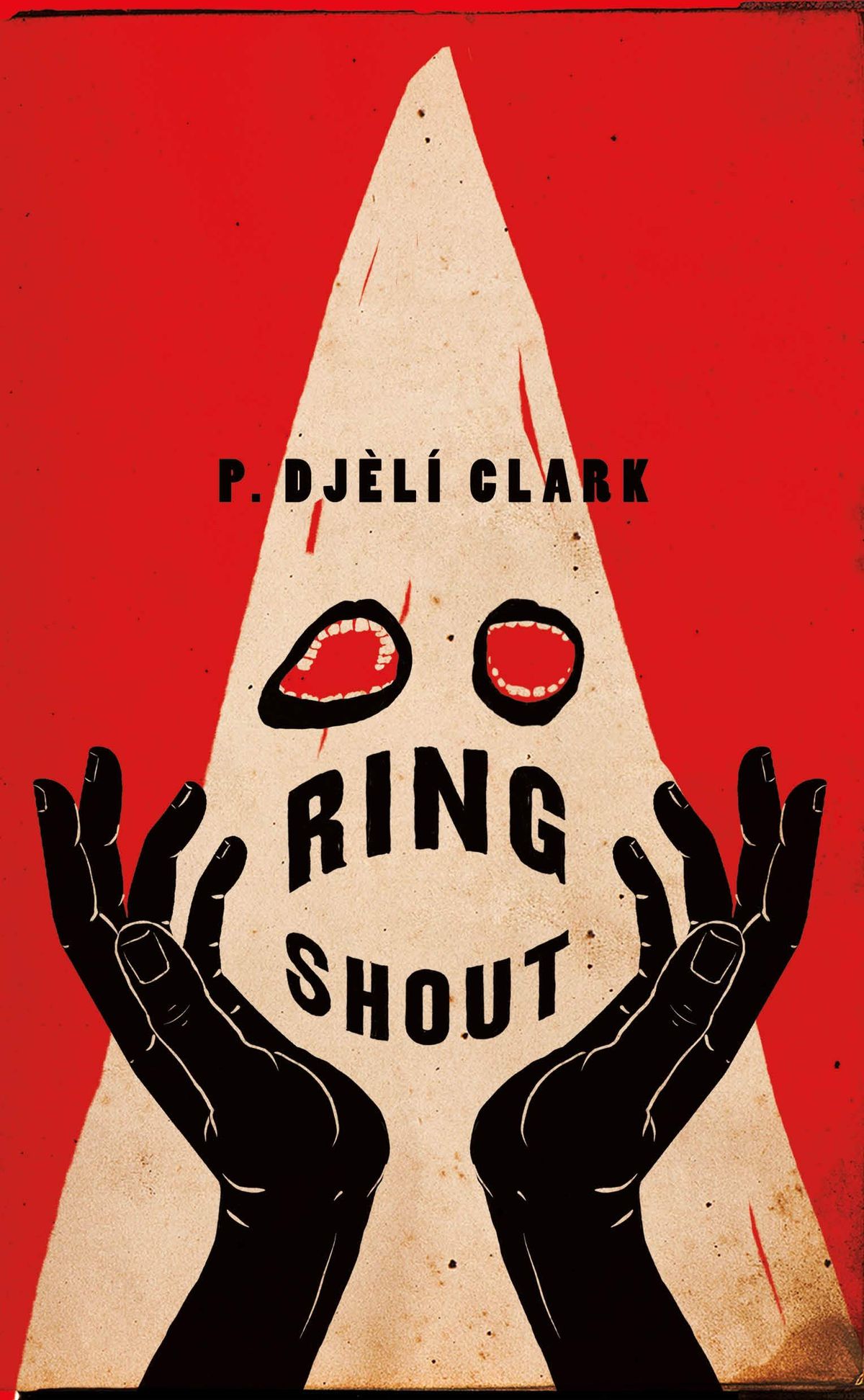
Image: Tor
Ring Shout by P. Djèlí Clark
The cover of P. Djèlí Clark’s short novel Ring Shout should gives you an immediate sense of the threat at hand. Set in 1922 in Georgia, the Ku Klux Klan experiences a resurgence in support, but not from the places you’d expect: their ranks are being infiltrated by otherworldly creatures who are drawn to their hatred and racism, and who are planning to use magic (in the form of the racist movie Birth of a Nation). Facing them are three black women, Maryse, Sadie, and Cordelia, who have come out of the First World War with a deadly skillset and a willingness to use it to fight against the evils of our world and others.
After a summer of protests against police brutality and racial inequality, Clark’s book strikes a balance of cathartic justice and pulpy adventure fiction as Maryse and her companions begin to understand the Lovecraftian threat they face. The otherworldly Ku Kluxes have found an easy avenue into our world through racists and bigots, but Maryse learns that power corrupts, and that even if her cause is just, she can easily turn down a devastating path that will destroy her home and everything she’s fought for.
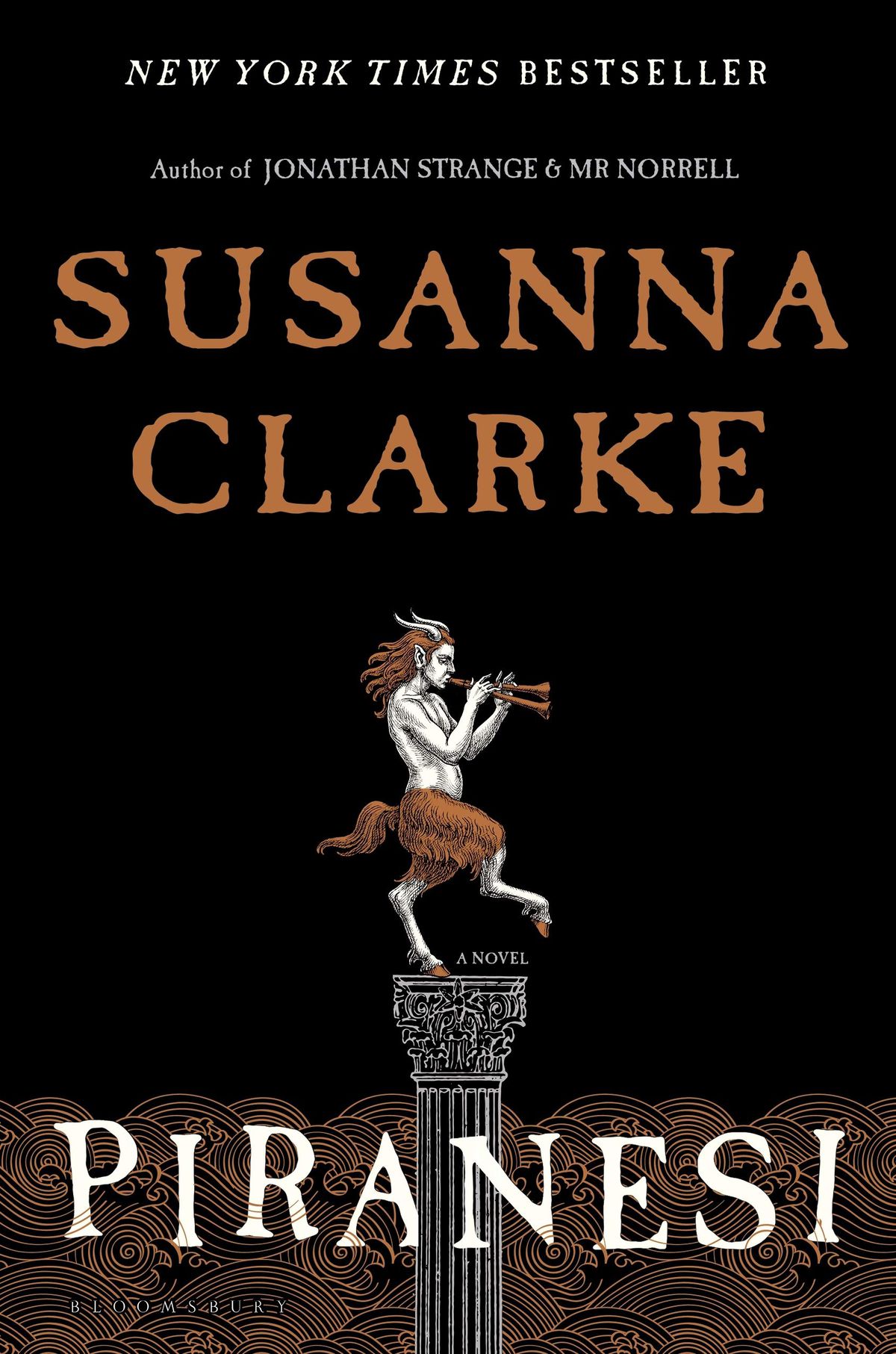
Image: Bloomsbury Publishing
Piranesi by Susanna Clarke
A man named Piranesi lives a solitary existence within a seemingly endless labyrinth of rooms, each with their own flavor and character. Its hallways are lined with statues of all types, and within those walls is a trapped ocean, which ebbs and flows. Piranesi has made it his mission to explore as much of his world as possible, and the only other evidence of other humans are 13 skeletons and a man called the Other.
Piranesi and the Other are searching for a better understanding of what their world is, and when the Other asks Piranesi about a 16th person, he begins to suspect that there is far more to their shared world and his own past than he realized. At its heart, Clarke has produced an exquisite novel about the walls and world that surrounds us, and the importance of questioning the very nature of the world.
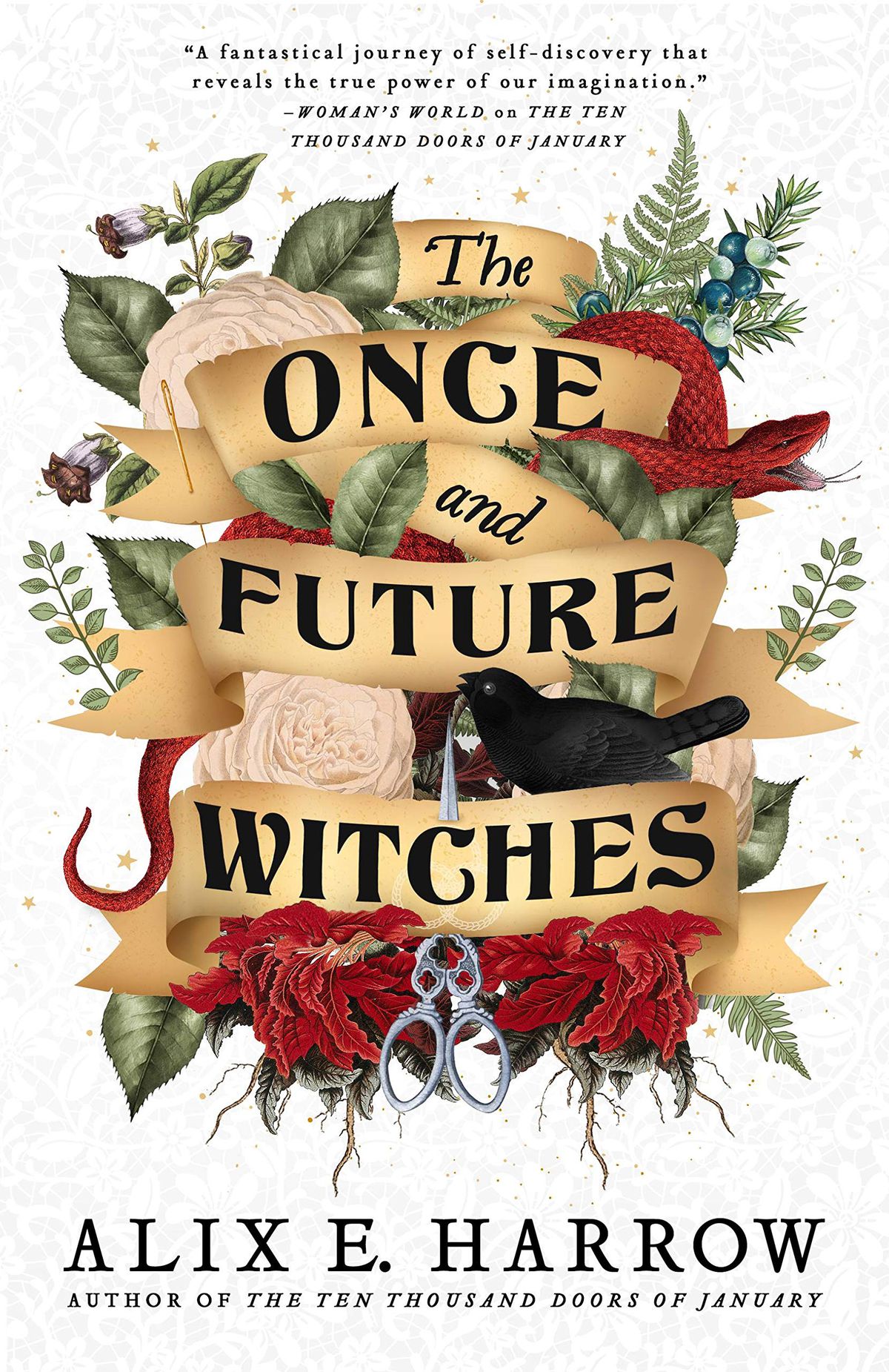
Image: Redhook
The Once and Future Witches by Alix E. Harrow
After her fantastic, world-hopping debut The Ten Thousand Doors of January, Alix E. Harrow follows the story of three sisters, Agnes Amaranth, Beatrice Belladonna, and James Juniper, who reunite after years of estrangement in Salem on the cusp of the Women’s Suffrage Movement. Salem, of course, is synonymous with its witch trials of the late 1600s, and witchcraft has been largely stamped out throughout the country. The three sisters realize that women not only seek the right to vote, but also the foundational power of witchcraft that threatens the male-dominated world.
The book was a delight to read in 2020, especially in the aftermath of a contentious presidential election. Harrow imbues the novel with fiery understanding of the history of women’s rights, and the book is brimming with anger over how men have found ways to shut women out from equality for centuries. Witchcraft and magic might be the focus of the plot, but its banishment and criminalization is just one way that those in power have found to undermine women throughout history.
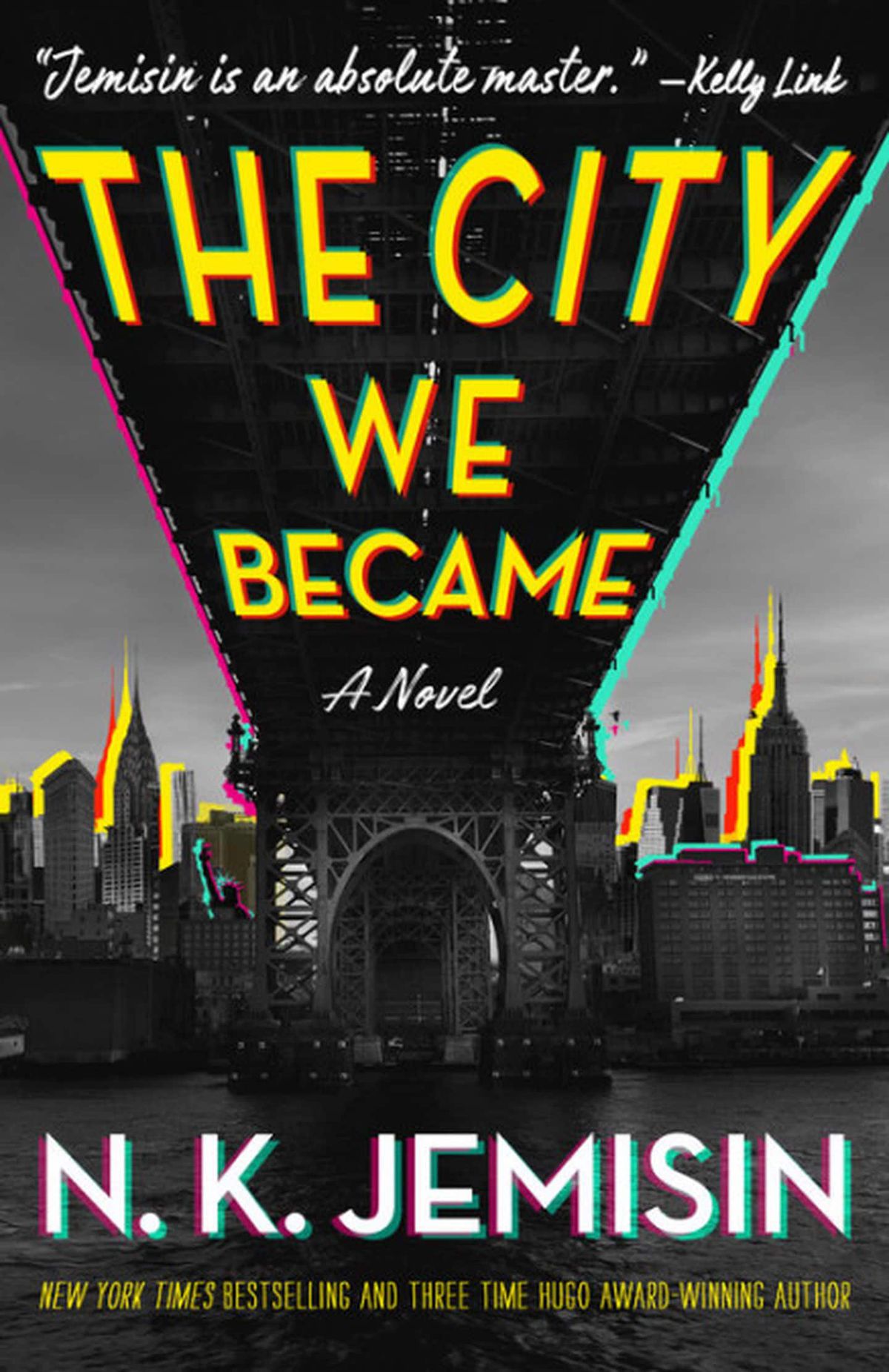
Image: Orbit
The City We Became by N.K. Jemisin
N.K. Jemisin is easily one of the best living writers working with speculative fiction today: her Broken Earth trilogy earned her numerous accolades, and earlier this year, the John D. and Catherine T. MacArthur Foundation named her a MacArthur Fellow for her body of work.
She frequently explores the nature of racism and its fallout in her books, and in her latest, The City We Became, she puts a fantastical spin on the gentrification of New York City, exploring racism through the lens of upended, Lovecraftian cosmic horror. Jumping off from her short story “The City Born Great”, we learn that the world’s major cities each birth avatars — their essence in human form, and New York City has created several, one for each borough.
As these avatars awaken and begin to realize their purpose, they also begin to realize that they face a new threat — a woman in white – who looks to destroy our world and remake it for her own, otherworldly purposes. Jemisin weaves together a wonderful love letter to the city and the people who make it great, and how forces like white supremacy and gentrification go hand-in-hand to destroy its vibrancy and spirit.

Image: Saga Press
Vagabonds by Hao Jingfang (translated by Ken Liu)
A long-standing trope in science fiction is what would happen after humans establish a colony on Mars: how long would it be before they begin to resist governance from Earth, and how would the two worlds diverge from one another, culturally?
That’s the premise behind Hao Jingfang’s debut novel, Vagabonds. A century ago, Mars fought Earth in a bid for independence, and won. Now that the embers have cooled, Mars has begun to send its first cross-cultural emissaries (known as the Mercury Group) to Earth to reestablish diplomatic and cultural ties.
After returning home after five years, the members of the Mercury Group find themselves caught between two very different worlds: hyper-capitalist Earth and a more collective / socialistic Mars. They’re disillusioned with their lives and opportunities back at home, and one member, Luoying — the granddaughter of a Martian leader — begins to question her family’s role in the separation between the worlds. Hao’s story is a slow burn, but excellent examination at the cultural differences and inequalities that separate us.
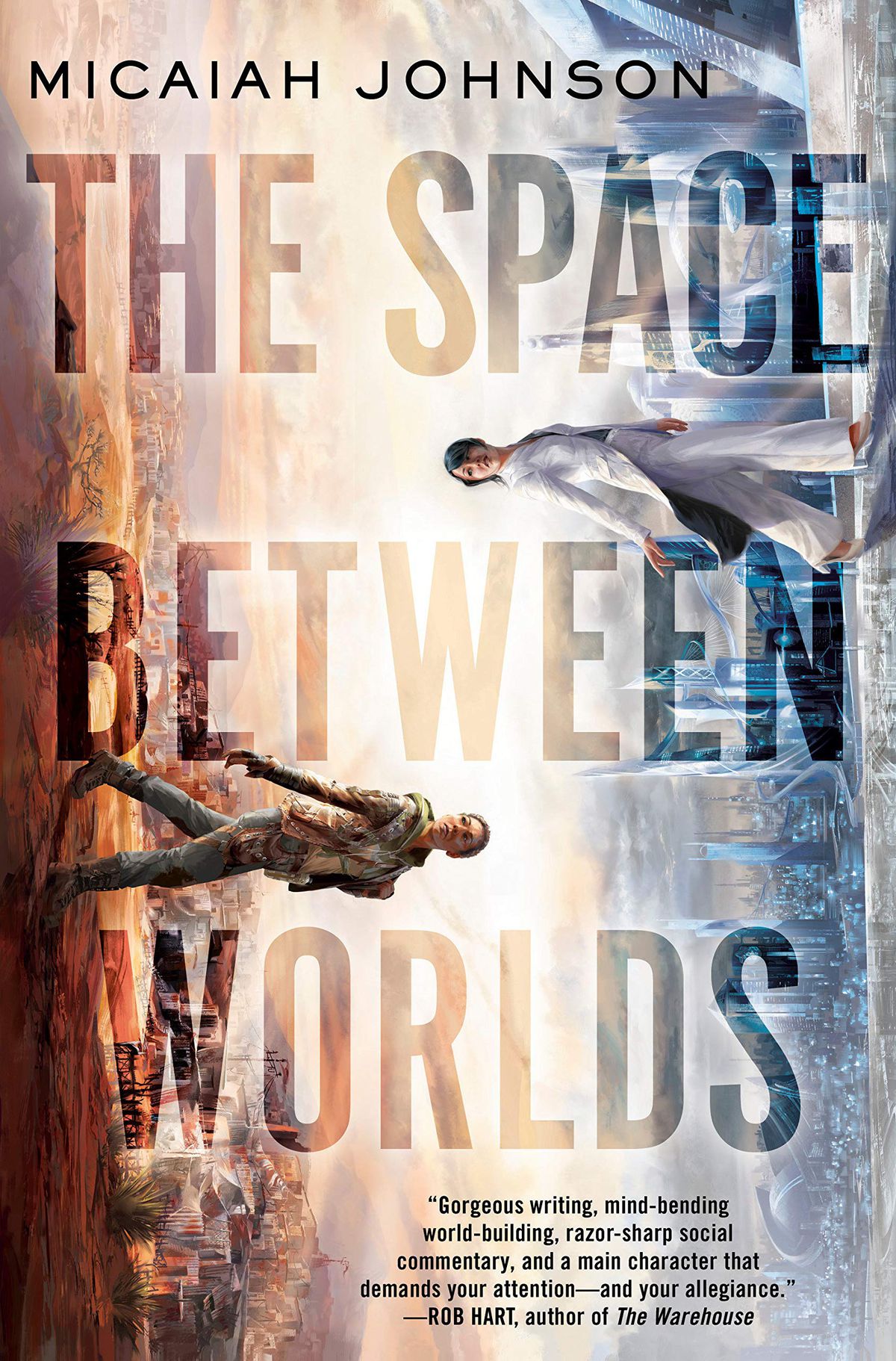
Image: Del Rey
The Space Between Worlds by Micaiah Johnson
If ever there was a time that it felt like we accidentally skipped onto the wrong timeline, this year was it. Multiple, alternate worlds is a trope that Micaiah Johnson plays with in her debut novel, The Space Between Worlds, which follows a young woman named Cara as she travels between worlds. Years earlier, a man named Adam Bosch discovered a method for traveling to other, alternate realities — around 400 of them. A traveller could make the trip, but only in realities in which their alternate selves weren’t around. Enter Cara, who grew up in the post-apocalyptic slums and who’s alternative selves seem to have bad luck: she can travel to 372 different worlds.
Working for the Eldridge Institute to collect data about the various worlds, but even with her new, privileged status as a Traveller, she’s caught between worlds: she’s only valuable to the company because of the misfortunes of her alternate selves — a status that could easily vanish in a snap. Through Cara, Johnson looks at big picture themes of economic and racial inequality and privilege, and how the boundaries we set up define who we are, all through the eyes of a powerful character looking to change the world.
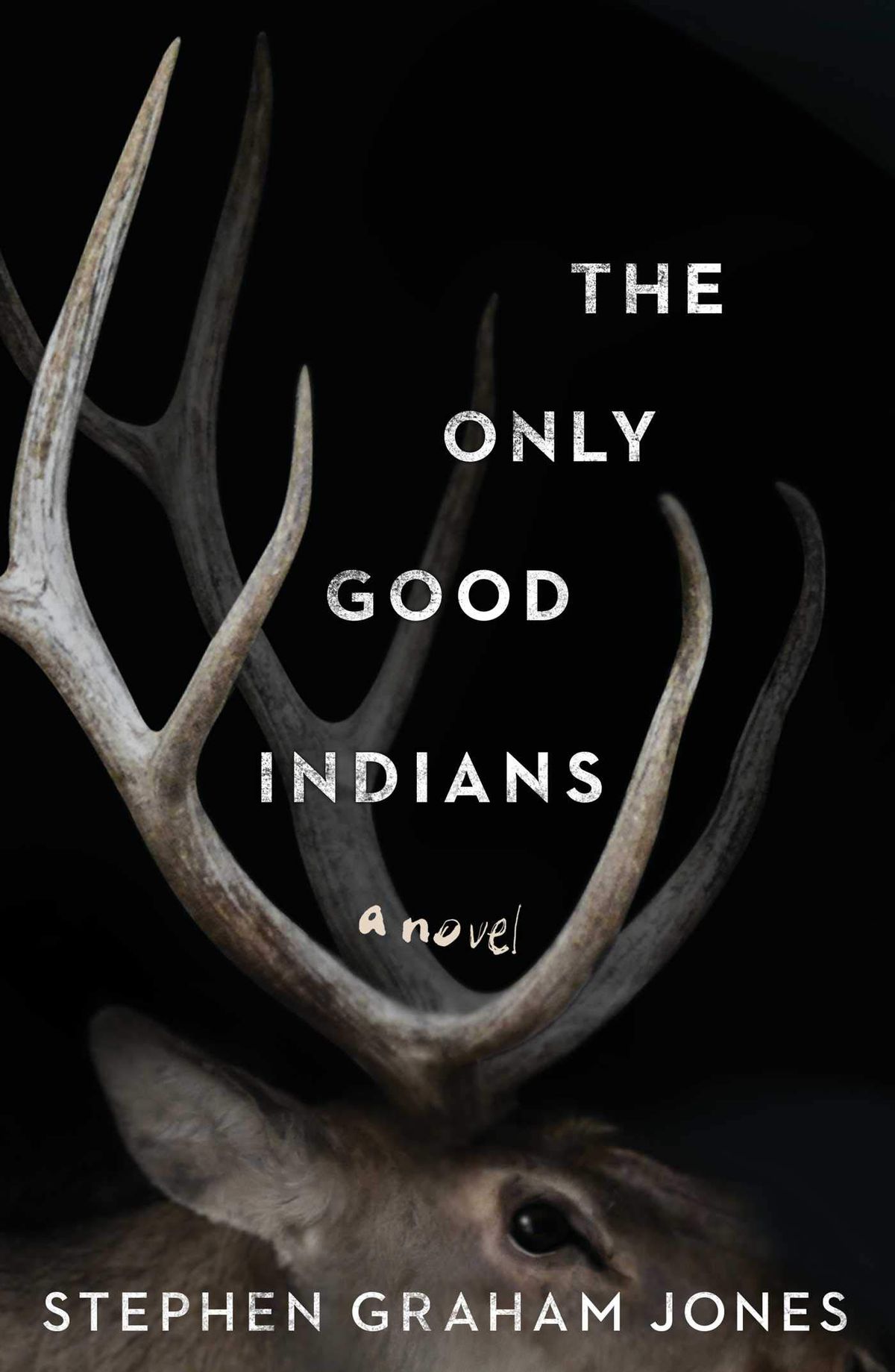
Image: Saga Press
The Only Good Indians by Stephen Graham Jones
In the opening moments of Stephen Graham Jones’ latest novel, The Only Good Indians, a Blackfoot man is killed in the parking lot of a midwestern bar after confronting an elk in a parking lot. Ricky is one of his four friends who will soon encounter the elk, spectral payback for choices they made a decade ago.
The quartet grew up on a reservation and headed out to a forbidden area to try and bag a kill before the end of hunting season. They hit the jackpot: a herd of elk sheltering in the midst of a snow storm, and who quickly fall to their bullets. A decade later, a spirit of one of their victims has returned and begins to quickly track them down to exact its revenge.
Jones has constructed a gripping horror tale, one that brings you into the lives of each man before finishing them off. But while there’s certainly horror in the final acts, he masterfully builds up the tension by injecting each with paranoia, fear, and greed, tapping into the racism inequality that’s directed towards indigenous Americans.
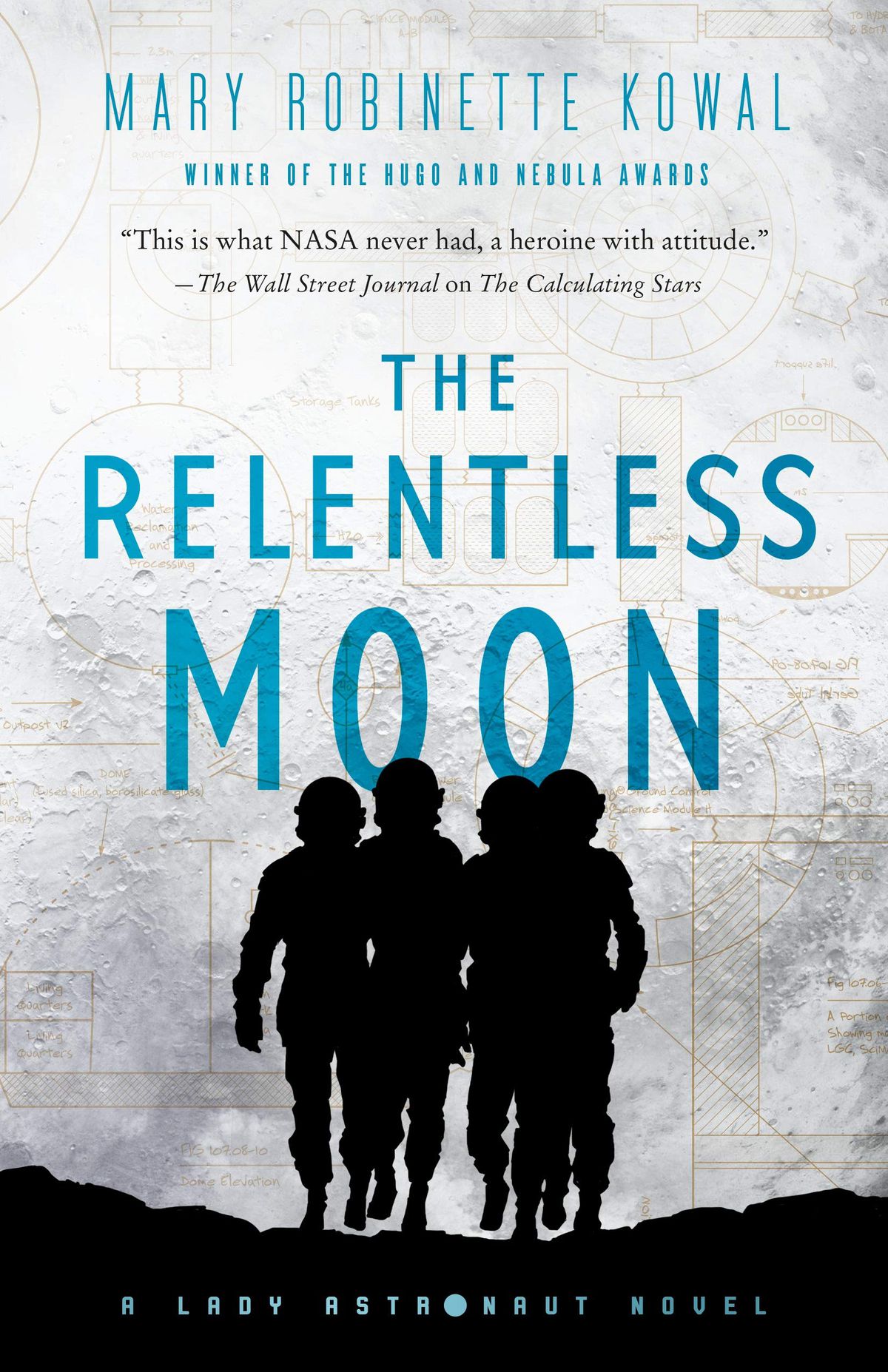
Image: Tor
The Relentless Moon by Mary Robinette Kowal
A couple of years ago, Mary Robinette Kowal wrote “The Lady Astronaut of Mars,” a short story following “lady astronaut” Elma York in an alternate space race that kicked off after a devastating asteroid strike on Earth.
In her latest, The Relentless Moon, Kowal tugs further at some of those themes, following experienced astronaut Nicole Wargin as she’s tasked with heading up security on a lunar base. The space program has come under threat as unrest as religious extremists work to sabotage rockets and the program’s facilities, while Wargin fights to keep the people she works with safe.
Throughout the series, Kowal has looked at the inequalities that shut out women and astronauts of color in our own real space program. The Relentless Moon takes an excellent look at how people cope with trauma, mental illness, and inequalities under extreme pressure in extraordinary situations.
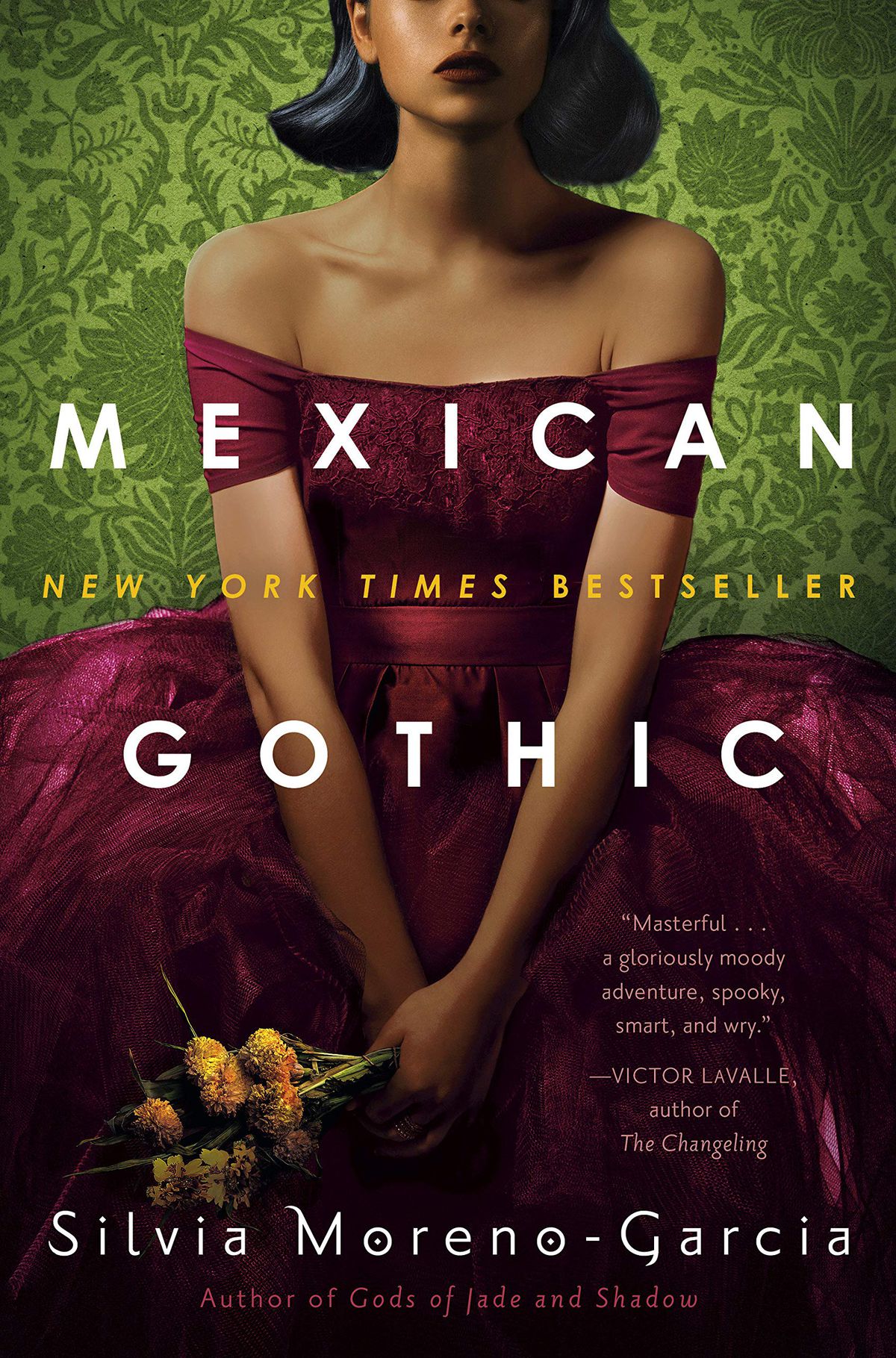
Image: Del Rey
Mexican Gothic by Silvia Moreno-Garcia
Mexican socialite Noemí Taboada is dispatched to a rural estate called High Place in rural Mexican after her father receives a distressing letter from her cousin, writing that she’s being held against her will and that the house is full of ghosts. What Noemí discovers is more than an ill relative: a sinister plot on the part of a decaying English family with a horrifying secret.
Silvia Moreno-Garcia’s electrifying and wonderful novel contains all the fixtures that you’d expect from a gothic story: a family that’s long since past its glory days, strange supernatural influences, and a wonderful, crumbling family home. As Noemí works to figure out the strange happenings at High Place, Moreno-Garcia sketches out a determined and empowered heroine who’ll stop at nothing to save herself and her family.
Moreno-Garcia goes beyond mere genre homage and bulds on the horror by utilizing the history of the European colonization and conquest of Mexico. The history of High Place and its bloody, oppressive legacy is integral to the scene that Noemí discovers, and its reveal is masterfully laid out, making for a gripping and thoughtful read.
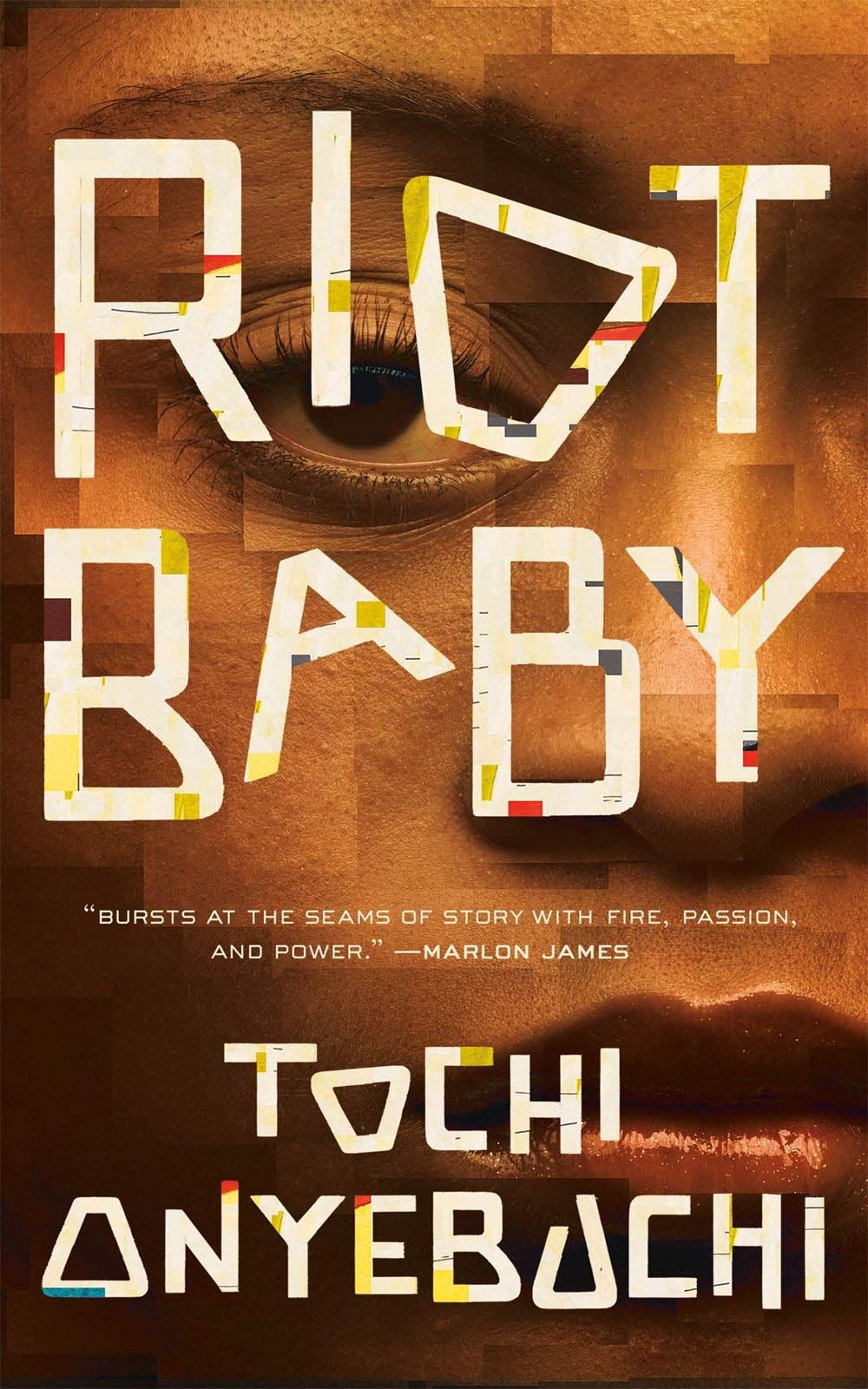
Image: Tor.com
Riot Baby by Tochi Onyebuchi
Tochi Onyebuchi’s debut adult novel is set in the modern day, following a young Black woman named Ella and her brother Kev, who was born in the midst of the Los Angeles Rodney King riots in the early 1990s. Ella has some special powers: she can see the future, fly, and project herself to other places. As the story progresses, the two children grow up, and Kev winds up arrested, brutalized, and jailed by the police and justice system.
Over the years while he’s incarcerated, he’s visited by his sister, who helped to keep him sane as he endures a brutal sentence. Ella, with all of her powers, is helpless to change his circumstances after he leaves his cell and into a new, high-tech and dystopian world. Onyebuchi’s slim book is a powerful read that brims with anger at the cyclical nature of oppression and violence directed at Black people, and how they might break free.
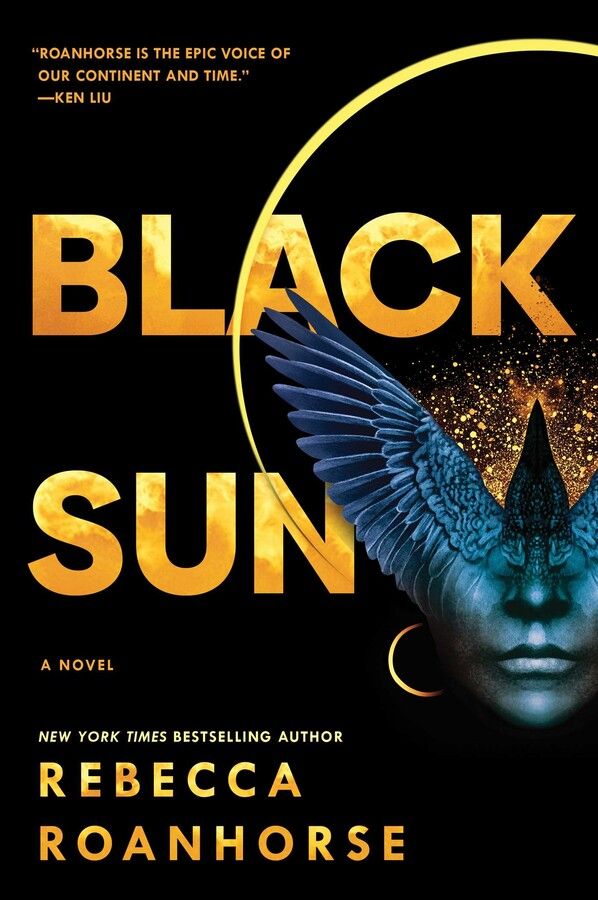
Image: Saga Press
Black Sun by Rebecca Roanhorse
Rebecca Roanhorse’s latest book is a bit of a departure from her first two novels, Trail of Lightning and Storm of Locusts. Where those two urban fantasies were breezy, action-packed thrillers set in a future and fantastical United States ravaged by climate change, Black Sun is an ambitious fantasy about a power struggle in an Indigenous American-inspired world.
As a winter solstice approaches, the city of Tova readies itself for a great celebration, unaware of a threat that’s emerged from a forgotten clan that was once massacred for their beliefs by one of the city’s Sun Priests. The remaining members of the Carrion Crow clan haven’t forgotten the attempt to exterminate them, and have sent along a special weapon — a boy raised as a weapon revenge — to exact revenge for those crimes. Roanhorse’s novel is a heartbreaking (and dark) look at the impact that trauma has over generations, and how the characters involved fight against the systems that they’re caught within.
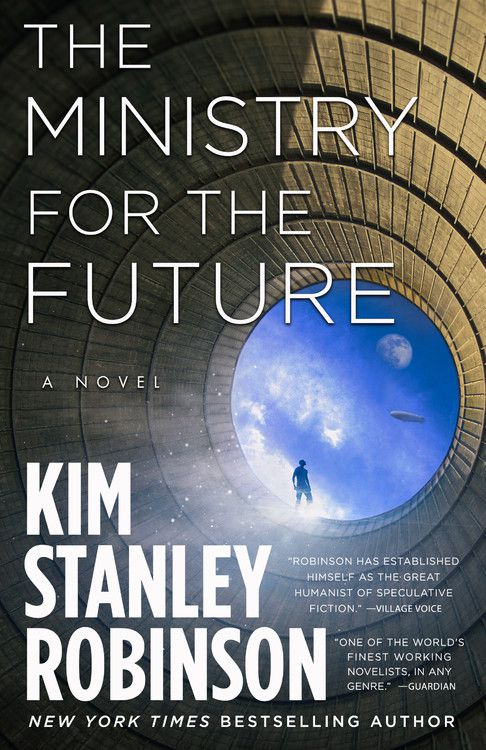
Image: Orbit
The Ministry For The Future by Kim Stanley Robinson
If there’s any book that hit me hard this year, it was Kim Stanley Robinson’s The Ministry for the Future, a sweeping epic about climate change and humanity’s efforts to try and turn the tide before it’s too late.
Robinson has explored these themes before: his novel Aurora is a realistic take on what space exploration might look like, and ultimately comes to the conclusion that we really need to focus on Earth before we go out into the cosmos; New York 2140 follows a series of characters in a drowned city, looking at what the impact of climate change might after catastrophe strikes.
The Ministry For The Future jumps just a couple of decades forward, and Robinson presents a horrifying look at what we might be in for. Earth faces cataclysmic heat waves that kill tens of millions in weeks, massive migrations, and conflicts all driven by a rapidly-warming planet. Through the members of an agency designed to save the planet — as well as with chapters exploring everything from intrepid scientists working to stop Antarctica’s glaciers from falling into the ocean to hydrogen and carbon atoms — Robinson lays out the likely hard steps that we’ll have to take to change our way of life to save the plant.
We asked Kim Stanley Robinson: Can science fiction save us?
How good utopian novels can change our thinking about the world
Read this
Image: Houghton Mifflin Harcourt
Burn-In by P.W. Singer and August Cole
Take the headlines about artificial intelligence and machine learning from the last decade or so, and use that as the basis to tell a story about an experimental police robot being partnered up with an FBI agent. That’s the premise of P.W. Singer and August Cole’s latest ripped-from-the-near-future technothriller, in which they construct a gripping read about what our near future of robotics might plausibly look like.
FBI Special Agent Lara Keegan is tasked with evaluating TAMS (Tactical Autonomous Mobility System) as a potential new tool for the Bureau. It comes in handy as Washington DC faces a new threat: a technology-adverse extremist who is looking to attack the city at its various weak points — launching cyberattacks against infrastructure and using drones to conduct assaults against people. Singer and Cole come from the policy and think tank worlds, and look at not only the potential threats that our current technological lives bring, but how the growing white nationalist movement seems poised to take advantage of those problems.
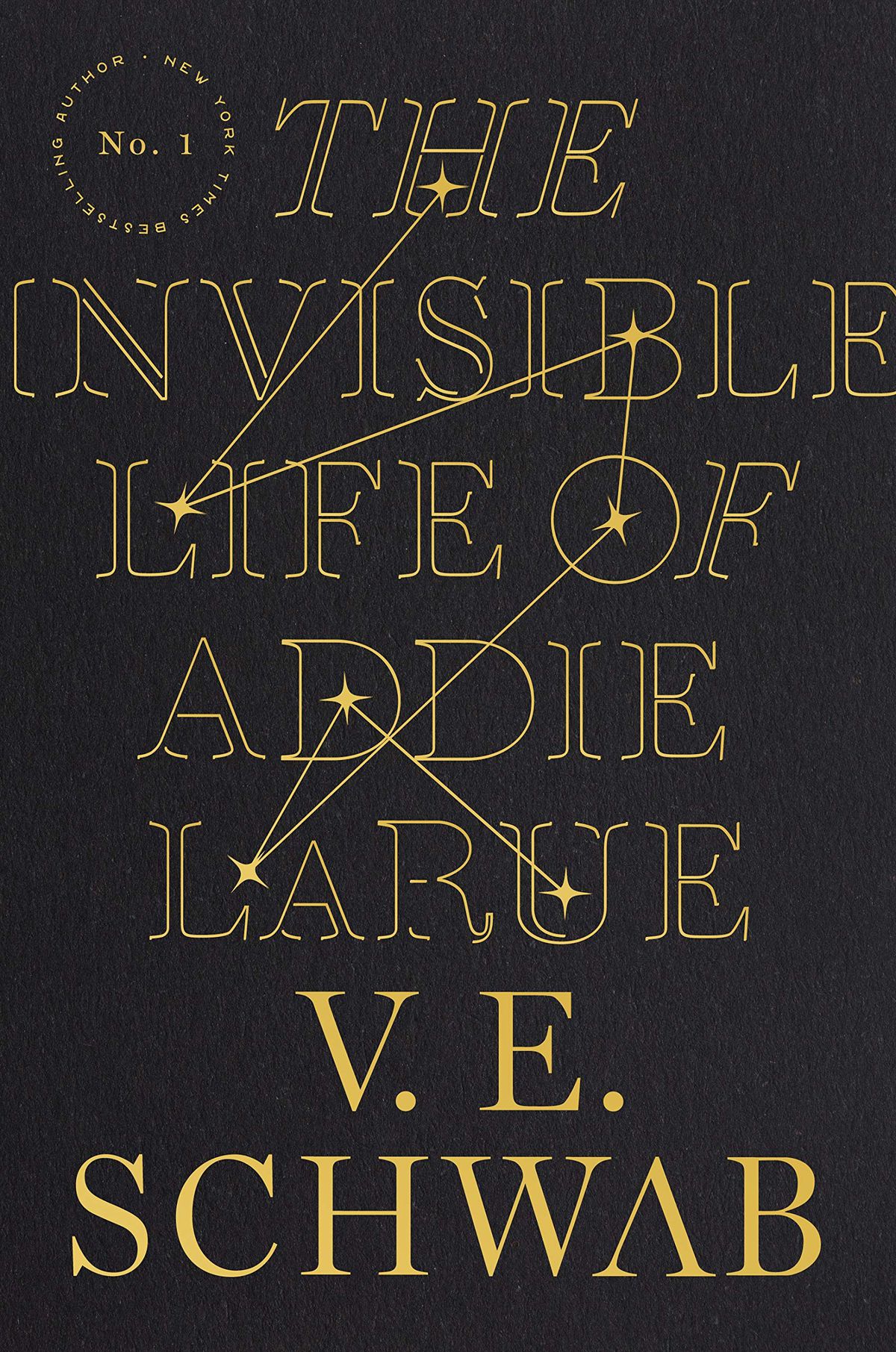
Image: Tor
The Invisible Life of Addie LaRue by V.E. Schwab
In 1714, a young woman named Adeline lives a quiet existence in her home village of Villon-sur-Sarthe in France. She yearns for something more — to travel beyond the world she’s familiar with, and to do more than just marry a fellow villager. She’s poised for such a marriage when she encounters an otherworldly stranger that promises to grant her wish, which she eagerly accepts.
As anyone who’s familiar with Faust knows, such bargains come with a high cost. Adeline will live for as long as she wants, completely free to explore the world, but nobody will remember her. For the next three centuries, she gets her bearings on the world, moving from place to place and learning to survive, completely alone in the world, except for her shadowy benefactor. All of that changes in 2014 when a boy remembers her for the first time. V.E. Schwab’s story is emotional and heartbreaking, and highlights the importance of those connections we make as we move through life — even in a year filled with virtual meetings, distanced gatherings, and time spent alone in our homes.
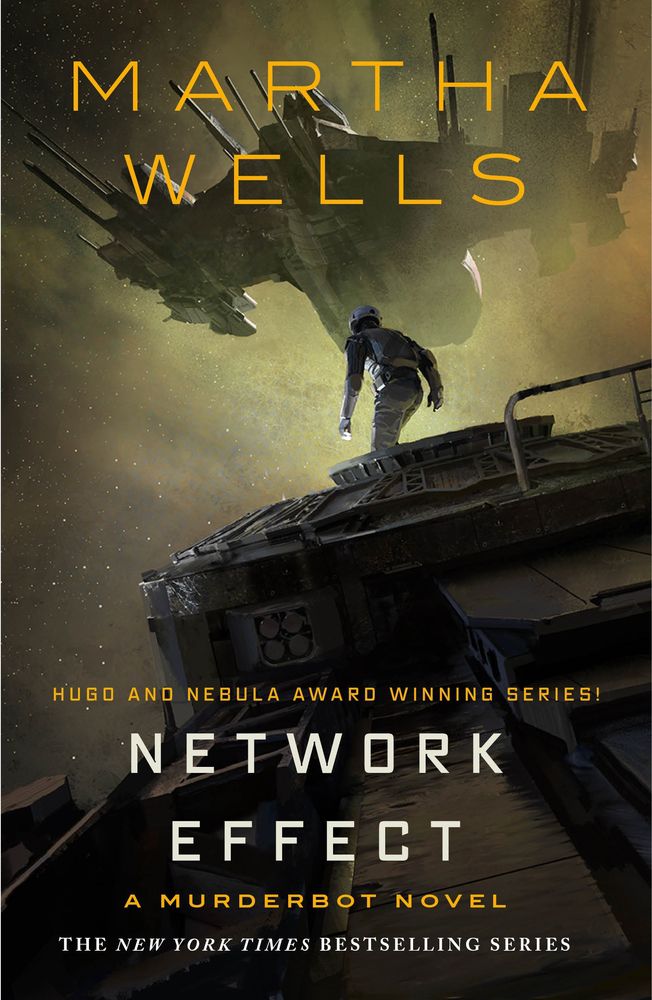
Image: Tor.com
Network Effect by Martha Wells
Martha Wells’s four Murderbot novellas set up a compelling character: a security robot that’s broken free of its internal governors, and which has taken to calling itself Murderbot. But unlike the Terminator, it just wants to be left alone to watch soap operas and avoid pesky humans. Network Effect is Wells’ first full-length novel in the series (it’s not the last adventure — another novella, Fugitive Telemetry, is due out next year), and like its predecessors, it’s an exploration of humanity and consciousness.
Network Effect finds Murderbot and its companions are ambushed and captured by unknown assailants, forcing the android to take drastic action to keep the people it’s reluctantly come to care about safe. Wells forces Murderbot to confront the things that it’s reluctant to do, and forces it to realize that caring for people isn’t a bad thing, and that the people and friends — even if they can be annoying — you bring around you in your immediate circle are valuable, not just for the help that they might immediately provide, but for one’s sense of being in the world. In a year where we’ve had to put many people at a physical distance, it’s a powerful story about the connections we form with those around us, and how those connections make for a better world.
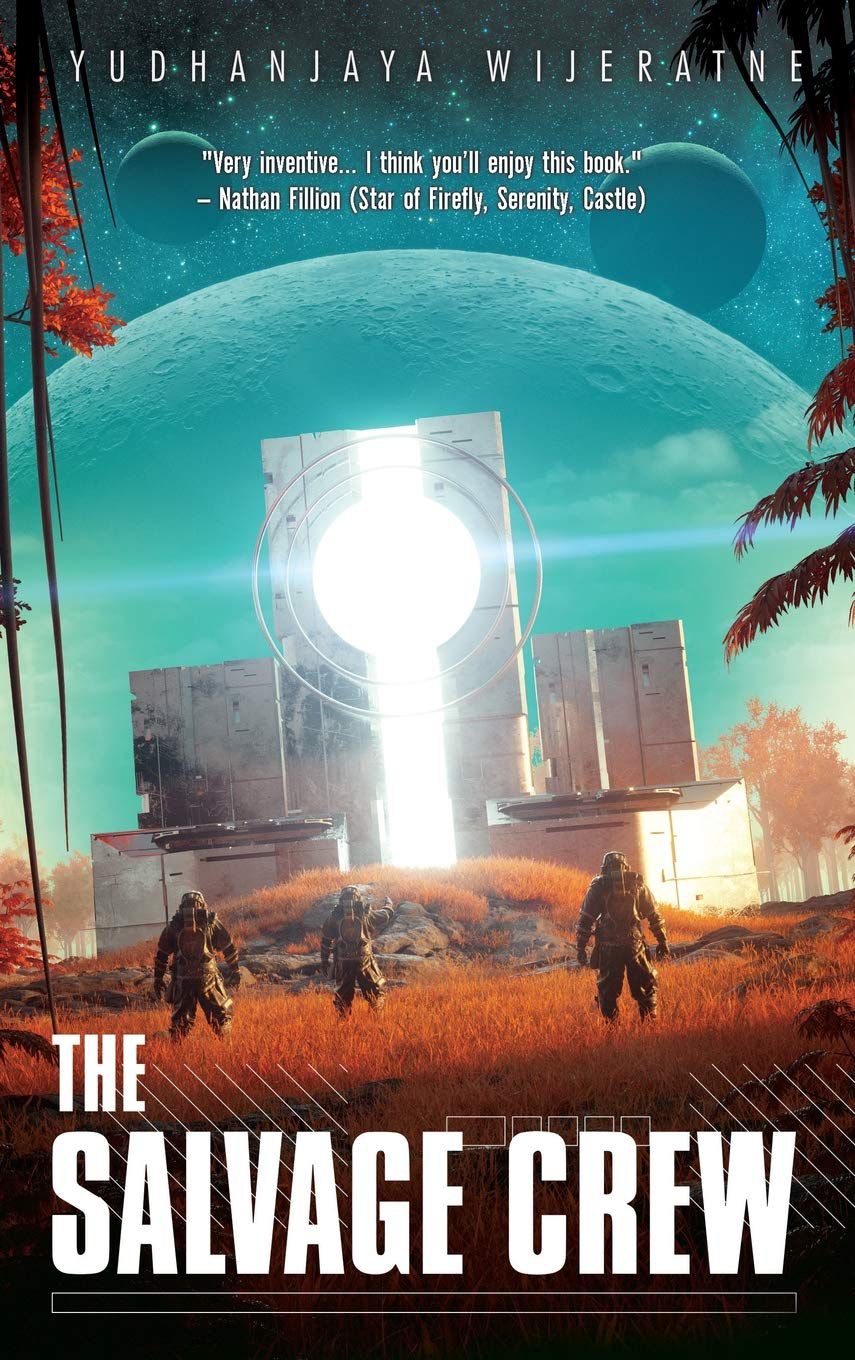
Image: Aethon Books
The Salvage Crew by Yudhanjaya Wijeratne
In the distant future, humanity has advanced to the point where we’re able to spread into the stars, allowing us to settle down on distant worlds. People survive the long distances and times of space by going into stasis, or uploading their consciousnesses to become advanced artificial intelligences. In Yudhanjaya Wijeratne’s latest novel, The Salvage Crew, OC, a Buddist-turned-AI poetry enthusiast expects his trek to Urmahon Beta to be a routine run to pick apart a downed UN colony ship.
What he and his motley crew of helpers, Simon, Anna, and Milo, find on the planet’s surface is a far more challenging environment, full of megafauna, cybernetic cultists, and diseases that threaten their survival while they try and pull together enough junk from the ship’s wreckage to make a profit. Wijeratne spins together a fabulous space adventure that takes an unexpected turn into the philosophical as his characters are forced to confront what it means to be human, and what intelligence beyond Earth might look like.
Runners up:
Providence by Max Barry
The Wall by Gautam Bahatia
A Beginning at the End by Mike Chen
Finna by Nino Cipri, Attack Surface by Cory Doctorow
Agency by William Gibson
Beowulf: A New Translation by Maria Dahvana Headley
The Vanished Birds by Simon Jimenez
Orders of Battle by Marko Kloos
The Burning God by R.F. Kuang
Goldilocks by Laura Lam
The Unspoken Name by A.K. Larkwood
The Hidden Girl and Other Stories by Ken Liu
Harrow the Ninth by Tamsyn Muir
Pacific Storm by Linda Nagata
A Deadly Education by Naomi Novik
Veil by Eliot Peper, Light of Impossible Stars by Gareth L. Powell
Hearts of Oak by Eddie Robson
88 Names by Matt Ruff
The Last Emperox by John Scalzi
Bonds of Brass by Emily Skrutskie
Creatures of Charm and Hunger by Molly Tanzer
Cyber Shogun Revolution by Peter Tieryas
A Pale Light in the Black by K.B. Wagers
The Fires of Vengeance by Evan Winter
The Lost Book of Adana Moreau by Michael Zapata.
